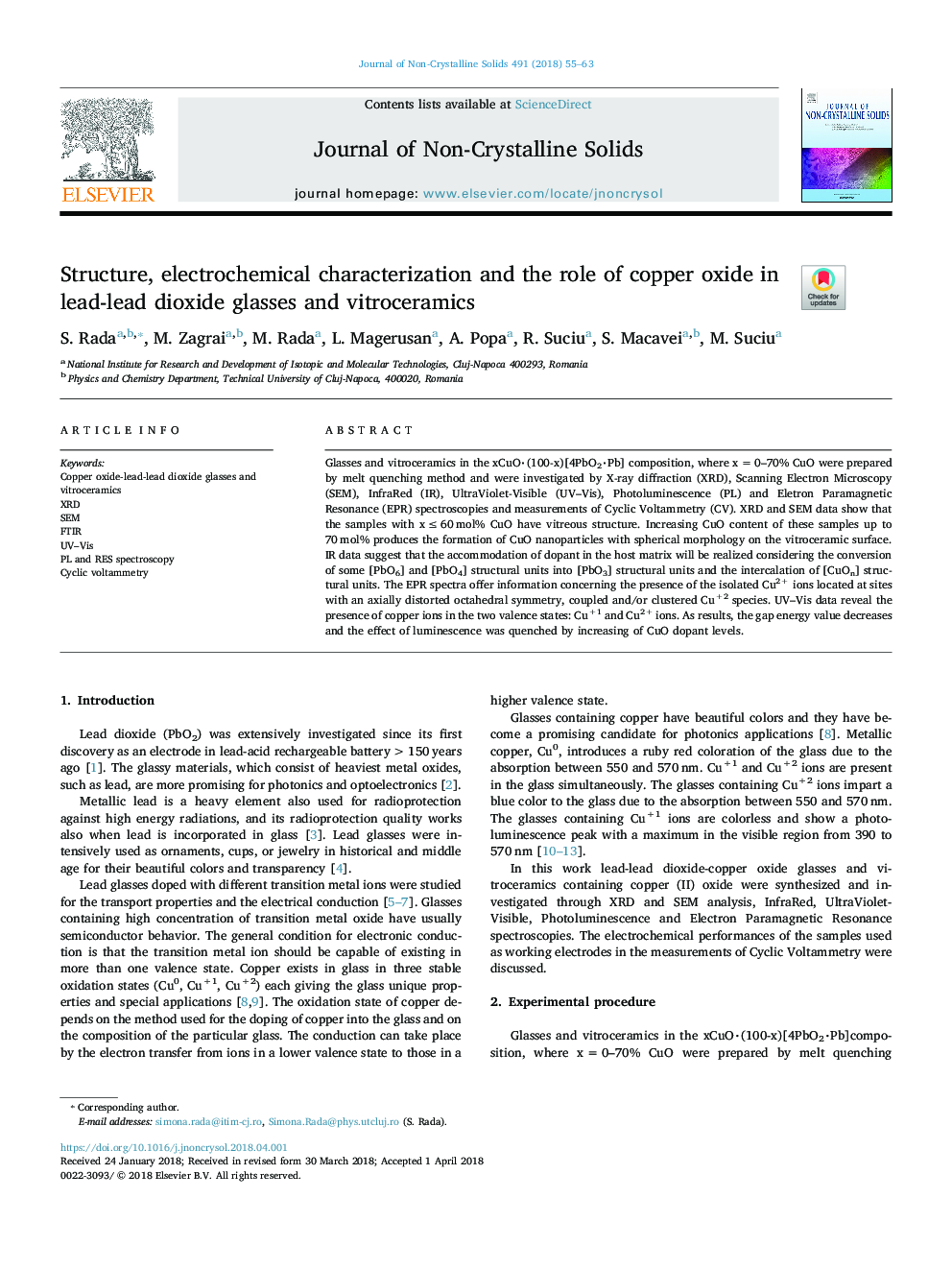| Article ID | Journal | Published Year | Pages | File Type |
|---|---|---|---|---|
| 7899892 | Journal of Non-Crystalline Solids | 2018 | 9 Pages |
Abstract
Glasses and vitroceramics in the xCuO(100-x)[4PbO2Pb] composition, where xâ¯=â¯0-70% CuO were prepared by melt quenching method and were investigated by X-ray diffraction (XRD), Scanning Electron Microscopy (SEM), InfraRed (IR), UltraViolet-Visible (UV-Vis), Photoluminescence (PL) and Eletron Paramagnetic Resonance (EPR) spectroscopies and measurements of Cyclic Voltammetry (CV). XRD and SEM data show that the samples with xâ¯â¤â¯60â¯mol% CuO have vitreous structure. Increasing CuO content of these samples up to 70â¯mol% produces the formation of CuO nanoparticles with spherical morphology on the vitroceramic surface. IR data suggest that the accommodation of dopant in the host matrix will be realized considering the conversion of some [PbO6] and [PbO4] structural units into [PbO3] structural units and the intercalation of [CuOn] structural units. The EPR spectra offer information concerning the presence of the isolated Cu2+ ions located at sites with an axially distorted octahedral symmetry, coupled and/or clustered Cu+2 species. UV-Vis data reveal the presence of copper ions in the two valence states: Cu+1 and Cu2+ ions. As results, the gap energy value decreases and the effect of luminescence was quenched by increasing of CuO dopant levels.
Keywords
Related Topics
Physical Sciences and Engineering
Materials Science
Ceramics and Composites
Authors
S. Rada, M. Zagrai, M. Rada, L. Magerusan, A. Popa, R. Suciu, S. Macavei, M. Suciu,
